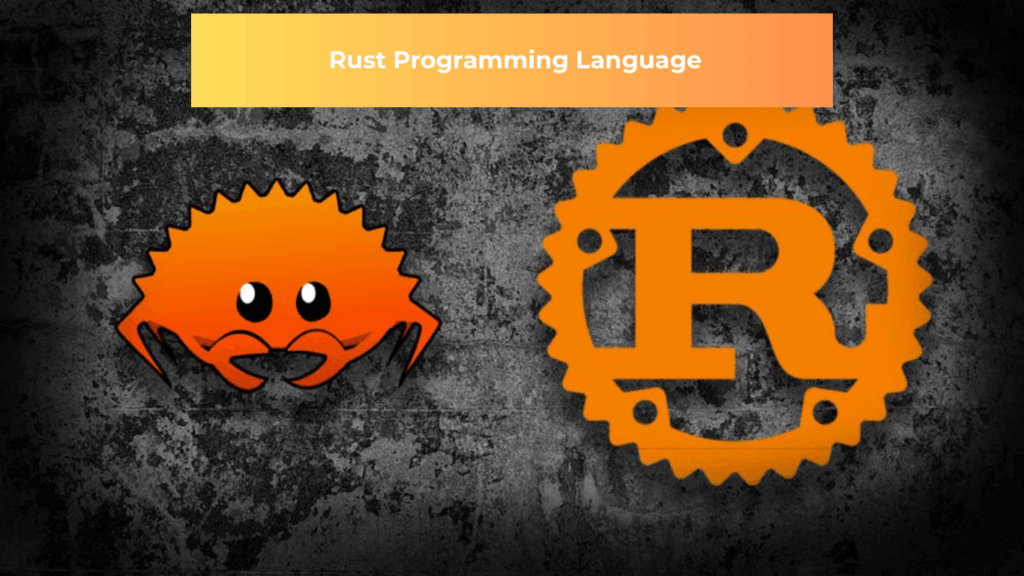Curious about the future of Rust programming language? Believe it or not, it all started with a stuck elevator—and now Rust is a powerhouse with 2.3 million developers and a 68.75% spike in business adoption. Why the hype? The Rust programming language delivers blazing speed, rock-solid safety, and tackles modern challenges like cloud computing and AI with ease. From startups to tech giants, it’s your go-to for building future-ready, reliable IT solutions. Let’s dive into what makes Rust Programming Language so special—and where it’s headed in 2025.
Ready to unlock Rust’s potential? Contact HBLAB for a free Rust consultation!
What is Rust Programming Language Used For?
Rust Programming Language is a modern, multi-paradigm language built for speed and safety. Unlike C++, which can trip over memory bugs, Rust’s ownership model acts like a vigilant gatekeeper, catching errors at compile time to prevent crashes or security flaws. This makes it a top pick for:
- Systems Programming: Crafting operating systems, browser engines, and device drivers.
- Cloud Computing: Powering scalable infrastructure like AWS’s Firecracker or Discord’s backend.
- AI Applications: Running high-performance data processing for machine learning models.
- Web Development: Building fast, secure web apps via WebAssembly (WASM).
The 2024 JetBrains Developer Survey shows 709,000 developers now call Rust their primary language, with adoption soaring in cloud and embedded systems. Its open-source community and 80,000+ libraries on crates.io make it a goldmine for businesses needing robust IT solutions.
How the Rust Programming Language Works in IT Development
Rust’s magic lies in three pillars: ownership, concurrency, and interoperability. The ownership model enforces strict memory rules, ensuring no memory leaks or dangling pointers—perfect for mission-critical projects. For example, a cloud app can handle thousands of requests without crashing, thanks to Rust’s safe concurrency tools like channels and mutexes. Plus, Rust Programming Language plays nice with C/C++ and WebAssembly, letting you integrate it into existing systems without a hitch.
From cloud platforms to AI tools, Rust Programming Language empowers developers to build scalable, secure applications with top-tier performance.
History of Rust Programming Language
The Spark of Rust: A Tale of a Broken Elevator

They say great inventions often spring from life’s little annoyances—those everyday frustrations that nag at us until a spark of genius ignites. In the case of Rust, a programming language now powering everything from cloud servers to AI, the story begins with a stalled elevator in a Vancouver apartment building in 2006. Graydon Hoare, a Mozilla software developer, stood trapped, not just by the faulty lift but by a nagging realization: the software running it, likely written in C or C++, had crashed due to sloppy memory management. These languages, powerful yet prone to errors, could bring critical systems to a halt with a single misstep.
Frustrated but inspired, Hoare envisioned a better way—a language that could match C++’s speed but lock out memory bugs before they could wreak havoc.
Rust’s Rise: From Side Project to Systems Powerhouse
Picture a language born from a coder’s frustration, crafted to be as tough as a fungus that thrives in the harshest conditions. That’s Rust—named after resilient fungi and built to endure the chaos of modern software. Back in 2006, Graydon Hoare kicked things off with a 38,000-line prototype in OCaml, pulling ideas from old-school languages like CLU (1974), Erlang (1987), and Limbo (1996). He wasn’t chasing flashy new tricks but leaned on battle-tested concepts, calling Rust “technology from the past came to save the future from itself”.
In 2009, Mozilla threw its weight behind the project, bringing in sharp minds like Patrick Walton and Niko Matsakis. By 2010, Rust Programming Language was rewriting itself—a bold move to a self-hosting compiler using LLVM for top-notch performance. The first public version, Rust 0.1, dropped in January 2012, ready to roll on Windows, Linux, and macOS. Over the next few years, Rust shed experimental features like the typestate system and garbage collector, doubling down on its now-iconic ownership model that keeps memory bugs at bay. By May 2015, Rust 1.0 launched, promising rock-solid backward compatibility.
From 2015 to 2020, Rust started turning heads. It powered Mozilla’s Servo browser engine and parts of Firefox, while big players like Samsung, Dropbox, and AWS jumped on board. Things got shaky with Mozilla’s 2020 layoffs, but the Rust community rallied, forming the Rust Foundation in 2021 with heavyweights like AWS, Google, Huawei, Microsoft, and Mozilla backing it. In 2022, Rust Programming Language hit a major milestone, becoming the first language beyond C and assembly to join the Linux kernel—a huge win for systems programming. Today, Rust’s passionate “Rustacean” community keeps pushing it forward, shaping a language that’s as reliable as it is revolutionary.
The Future of Rust Programming Language
Rust programming language trends point to a bright yet challenging future. Rust’s memory safety and performance make it a top choice for systems programming, web development, and emerging fields like AI and WebAssembly (WASM). Its integration into the Linux kernel, with drivers merged in 2024, signals growing acceptance in critical infrastructure. Adoption in cloud computing (e.g., AWS’s Firecracker) and AI (e.g., TensorFlow bindings) is expanding, driven by Rust’s efficiency and safety.
However, the 2024 State of Rust survey highlights concerns: 45.5% of developers worry about insufficient industry adoption, up from 42.5% in 2023, and 45.2% cite complexity as a barrier. Slow compilation and debugging difficulties persist, though tools like rust-analyzer and Zed are improving workflows. The survey also notes a slight decline in Rust usage (12.6% in 2024 vs. 13.05% in 2023 per Stack Overflow), suggesting challenges in scaling adoption.
Despite these hurdles, Rust software development is poised for growth. The U.S. White House’s 2024 push for memory-safe languages like Rust, alongside adoption by Google (Chromium) and Microsoft (Windows), bolsters its credibility. WebAssembly’s rise, with 23% of Rust developers targeting browser-based WASM, positions Rust Programming Language for high-performance web applications. HBLAB’s expertise in Rust for AI development and Rust for cloud computing ensures businesses can leverage these trends for scalable, secure IT solutions. With ongoing community support and governance reforms, Rust’s future remains promising for innovative IT projects.
Advantages of Rust Programming for Businesses

Rust’s unique strengths make it a game-changer for businesses seeking high-performance, secure, and scalable software solutions. From startups to tech giants, Rust Programming Language is transforming how companies build reliable applications in today’s fast-paced tech landscape. Below, we explore its key advantages, real-world applications, and future potential, backed by industry examples and trends.
- Blazing Performance: Rust delivers speed on par with C++, making it ideal for computationally intensive tasks. Its zero-cost abstractions ensure no runtime overhead, enabling businesses to handle demanding workloads like real-time analytics or high-frequency trading systems.
- Unmatched Memory Safety: Rust’s ownership model eliminates entire classes of bugs, such as null pointer dereferences and data races, at compile time. This reduces security vulnerabilities and costly downtime. For instance, Microsoft uses Rust in Windows components to enhance security, replacing error-prone C++ code and reducing vulnerabilities in certain modules. This makes Rust Programming Language a top choice for businesses prioritizing robust cybersecurity.
- Scalability for Modern Systems: Rust powers large-scale systems, from cloud infrastructure to IoT devices. Its minimal runtime and efficient memory usage enable seamless scaling across distributed environments. Discord, a communication platform with over 150 million monthly active users, adopted Rust for its backend to handle massive concurrent connections with low latency. Rust’s scalability ensures businesses can grow without performance bottlenecks.
- Thriving Community and Ecosystem: Rust’s open-source ecosystem, with over 80,000 crates on crates.io as of July 2025, provides a wealth of libraries for diverse use cases, from web frameworks like Actix to AI libraries like Rustformers. The Rust community, affectionately called “Rustaceans,” is known for its collaborative spirit, offering extensive documentation and forums for rapid problem-solving. The 2024 Stack Overflow Developer Survey crowned Rust the “most loved language” for the eighth consecutive year, with 3.5 million developers now using it, a 75% increase since 2022.
- Cross-Platform Versatility: Rust Programming Language supports major platforms—Windows, macOS, Linux, and embedded systems—with a single codebase. Tools like Cargo simplify multi-platform deployment, allowing businesses to target diverse environments effortlessly.
- Developer Productivity with Modern Features: Rust Programming Language balances safety and performance with expressive features like pattern matching and async/await for concurrency. Its standard library, inspired by C++ but streamlined, eases transitions for systems programmers. IDE support, including rust-analyzer and RustRover, boosts productivity with real-time error detection and code suggestions, reducing development time for complex projects.
Challenges of Rust Programming Language: What to Watch Out For
Rust is a powerhouse, but it’s not without its quirks. Adopting the Rust programming language can feel like learning to ride a bike with training wheels that are a bit too strict. Here’s a friendly rundown of the main hurdles and how to navigate them, so you know what to expect.
Tough to Learn at First
Rust’s ownership model is like a super-strict coach ensuring your code never crashes due to memory issues. It’s brilliant for safety but can trip up developers used to the freewheeling style of Python or Java. The borrow checker—Rust’s rule-enforcer—flags errors before your code runs, which is great but can feel like hitting a wall if you’re new. It takes time to get the hang of, but once you do, it’s like unlocking a cheat code for bug-free software.
Tooling Isn’t Quite There Yet
Rust’s toolkit is solid, but it’s not as polished as C++’s. If you’re used to fancy profiling tools like Valgrind, Rust’s debugging options might feel a bit basic, making performance tweaks trickier. That said, tools like RustRover and rust-analyzer are stepping up with slick features like code suggestions and error spotting, and 8.9% of Rust developers now use the Rust-built Zed editor. The gap is closing, but it’s not fully closed yet.
Setup Takes Some Effort
Starting a Rust project can feel like assembling IKEA furniture—powerful once done, but you’ll need to fiddle with Cargo.toml files and dependencies upfront. Compared to Go’s plug-and-play vibe, Rust’s setup via Cargo is a bit more involved. Plus, Rust Programming Language forces you to plan for every possible scenario early on, unlike Ruby, where you can whip up quick prototypes without worrying about edge cases. This makes your code rock-solid but can slow down those “just get it running” moments.
Compilation Can Test Your Patience
Rust’s obsession with safety means it checks everything before building your code, which can take a while—especially on big projects. The 2024 State of Rust Survey found 45.2% of developers grumbling about this complexity . The community’s working on fixes like the Cranelift backend to speed things up, but for now, you might need a coffee break during compiles.
Not Everyone’s Using It (Yet)
Rust programming language is awesome, but it’s still a bit of an underdog compared to giants like C++ or Java. The 2024 State of Rust Survey showed 45.5% of developers worrying about its smaller industry footprint, up from 42.5% in 2023, and its usage dipped slightly to 12.6% from 13.05%. This means finding Rust experts or plugging it into older systems can be tricky. But with big names like Microsoft and AWS jumping in, Rust’s gaining ground fast.
How HBLAB Smooths the Way
These challenges are real, but they’re not dealbreakers. HBLAB’s experts know the ins and outs of the borrow checker and streamline project setups to save you headaches. With tailored training and agile workflows, we help your team master software development and build secure, high-performance solutions without the stress.
Rust vs. Other Languages: A Comparison

Choosing the right programming language for your project can be tricky. Rust Programming Language is known for its speed and safety, but how does it compare to C++, Python, Go, JavaScript, and Swift? Below is a clear, straightforward comparison to help you decide which language fits your needs.
|
Feature |
Rust | C++ | Python | Go | JavaScript | Swift |
| Performance | Very fast, like C++ | Very fast | Slower | Fast | Good for web | Fast, Apple-optimized |
| Memory Safety | Safe at compile time | Manual, risky | Uses garbage collection | Uses garbage collection | Uses garbage collection | Uses ARC |
| Concurrency | Safe, built-in ownership | Manual, prone to errors | Limited by GIL | Easy with goroutines | Single-threaded, event-driven | Safe, actor-based |
| Learning Curve | Hard | Medium | Easy | Easy | Medium | Medium |
| Ecosystem | Growing, crates.io | Large, mature | Huge, mature | Strong, focused | Huge, npm | Apple-focused, strong |
| Best For | Systems, cloud, AI | Games, legacy systems | Web, data science | Web, microservices | Web apps | iOS/macOS apps |
Rust vs. C++: Safety vs. Control
- Rust’s Strengths: Rust ensures safety with its ownership system, preventing memory errors like leaks or crashes before the code runs. Its modern design makes writing reliable code easier than C++’s older, complex syntax.
- C++’s Strengths: C++ gives developers total control over memory, perfect for fine-tuning performance in games or legacy systems. Its large library and compatibility with older code make it a go-to for established projects.
- Best Choice: Pick Rust Programming Language for new, safety-critical projects like cloud systems. Choose C++ for existing codebases or high-performance apps like game engines.
Rust vs. Python: Speed vs. Ease
- Rust’s Strengths: Rust Programming Language is much faster than Python, ideal for tasks needing high performance, like AI or real-time systems. It handles multiple tasks at once without issues, unlike Python’s limitations.
- Python’s Strengths: Python is easy to learn and use, with a huge community and tools for web development, data analysis, and machine learning. It’s great for quick prototyping.
- Best Choice: Use Rust for fast, secure systems. Go with Python for rapid development in web or data science projects.
Rust vs. Go: Precision vs. Simplicity
- Rust’s Strengths: Rust Programming Language offers precise control over memory, making it great for low-level tasks like embedded systems or WebAssembly apps. It ensures safety without slowing down.
- Go’s Strengths: Go is simple and fast to develop with, especially for web services and cloud apps. Its built-in concurrency tools make it easy to handle many tasks at once.
- Best Choice: Choose Rust for performance-heavy or safety-critical projects. Pick Go for quick-to-build web or cloud services.
Rust vs. JavaScript: Power vs. Web
- Rust’s Strengths: Rust Programming Language is faster and safer than JavaScript, catching errors early. It’s perfect for high-performance web backends or WebAssembly-based apps.
- JavaScript’s Strengths: JavaScript rules web development with its huge ecosystem of tools and frameworks. It’s flexible and great for fast prototyping of web apps.
- Best Choice: Use Rust for powerful, secure web backends. Choose JavaScript for interactive web interfaces or full-stack development.
Rust vs. Swift: Versatility vs. Apple
- Rust’s Strengths: Rust Programming Language works across all platforms (Linux, Windows, macOS), making it ideal for universal tools or cloud systems. Its safety comes with no performance cost.
- Swift’s Strengths: Swift is tailored for Apple’s ecosystem, offering a smooth experience for iOS and macOS app development with simple memory management.
- Best Choice: Select Rust for cross-platform or system-level projects. Use Swift for apps targeting Apple devices.
CONTACT HBLAB FOR A FREE CONSULTATION
See more:
– Top-Rated Software Outsourcing Companies in Vietnam
– How to Make Games Without Programming: Best No-Code Tools & Professional Tips




